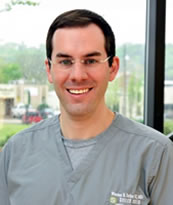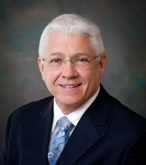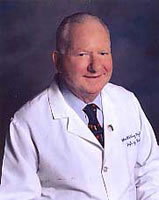During the past ten to fifteen years, the number of cosmetic laser and light procedures performed has exploded. According to a 2012 report by the American Society of Plastic Surgeons, the following increases have occurred:
- Intense Pulsed Light (IPL) for various uses increased from 0 recorded procedures in 2000 to 553,293 in 2012
- Laser Hair Removal increased over 50% from 735,996 (2000) to 1,118,612 (2012)
- Laser Skin Resurfacing increased almost 200% from 170,951 (2000) to 509,055 (2012)
This increase in procedures and in potential dangers has been driven by the availability of many new laser and light technologies that can address everything from reduction of lines, wrinkles, and acne scars to the removal of unwanted hair, tattoos, age spots, and skin discolorations, and many other aspects of medical skin conditions and of overall appearance. It is also driven by an increasing demand for these procedures from consumers. Younger people want to mimic the beauty they see in the media, manufacturers and service providers increasingly push youth and beauty in the multi-billion dollar cosmetic/beauty industry. In addition, many Baby Boomers are seeking to stave off the natural decline of advancing age. This latter group consists of a huge population bulge now reaching mid-50s to early 70s. This trend is projected to continue over the next decade.
Although there has been a rise in the number of medical practitioners (physicians, physician assistants, nurse practitioners, and nurses), these procedures are increasingly being provided by non-physician and even non-medical practitioners who work in an industry that is largely unregulated by the existing medical regulatory infrastructure. Today a consumer can see an ad for skin rejuvenation (that shows attractive before-after results), visit a so-called med-spa or even a well-established physician's practice, and be treated with what are highly complex pieces of laser and light equipment by non-physicians, from nurses to technicians to cosmetologists. The degree of oversight varies from adequate to virtually no supervision. Yet lasers and other light-based devices can seriously burn and maim patients when used improperly. In short, it is not as simple and always safe as the providers would have consumers believe.
It is just as common to see complaints (more often of lack of result or lack of expertise, although complications such as burns do occur) from well-established medical and cosmetic practices as it is to see them from the less physician-involved "medspas." Being well-trained and experienced in one specialty, such as plastic surgery or dermatology, does not simply guarantee that a physician or non-physician is automatically able to safely and effectively perform a laser procedure without proper training. It happens all too often that a physician purchases a laser and quickly delegates its use for a medical/cosmetic procedure to a non-physician (physician's assistant, nurse practitioner, nurse, aesthetician, etc.) without the physician having the proper
training to perform the procedure or ensuring the qualifications of the performing non-physician practitioner. Patients would trust that physician and non-physician to know what they are doing and often do not know what questions to ask to educate themselves about the procedure or the person about to perform it.
Unfortunately, and often unknown to patients, there is relatively vague legal language across many state medical boards and often lax regulation of these procedures, who is allowed to perform them, and what training and supervision is required. Too often the only topic discussed by regulators is "who can perform what." However, the focus really needs to be not only on "what level of practitioner can perform which type of procedure," but also on "what education and training each practitioner (physician or non-physician) should obtain," and "what level of supervision of non-physicians should occur." The American Board of Laser Surgery (ABLS) is currently finalizing a comprehensive document addressing these questions and making recommendations for better regulations, education, training, and supervision of cosmetic laser procedures and practitioners. This document will soon be presented to the Federation of State Medical Boards (the governing body), and each individual state medical board along with various laser safety and regulatory agencies and societies.
The medical community, and the public in general, need to see that the practice of laser medicine and surgery is its own medical specialty that should require specialized requirements for education, training, regulation, safety, and practitioner supervision. The ABLS is diligently working to heighten awareness in medical professionals, regulators, and patients.
Properly performed laser treatments can accomplish dramatic results such as 90%-plus removal of an unsightly hemangioma. But, botched laser hair removal can result in severe burns, and likely lifelong scars. A "simple" treatment can have a great outcome but the same treatment can have a devastating impact if the wrong device is used (using the wrong laser for a certain condition), if the laser or light energy device is used improperly, or if the practitioner is not properly trained/supervised and experienced, and therefore turns what should be a routine treatment into a significant complication.
In summary, the practice of laser medicine and surgery can offer great and safe results to patients if the physician and non-physician practitioners obtain the proper training and education and really specialize in these procedures instead of just quickly "adding them on" to a current non-laser practice. Non-physicians must be better trained and supervised, but physicians must also be trained and regulated. State medical boards must strengthen laws and enforcement, and hopefully the ABLS will be able to facilitate this. Patients can be very happy and achieve great results in cosmetic concerns (lines, wrinkles, sun damage, etc.) and in medical skin concerns (rosacea, melasma, skin discoloration and hyperpigmentation, acne, acne scars, birth marks, etc.). However, these procedures do have risks even if properly performed but certainly if provided by untrained and unsupervised hands.











